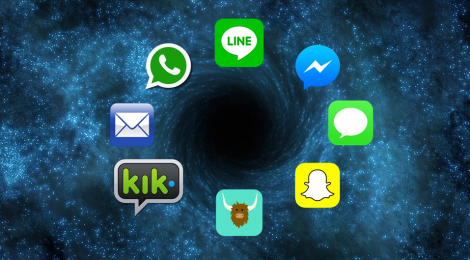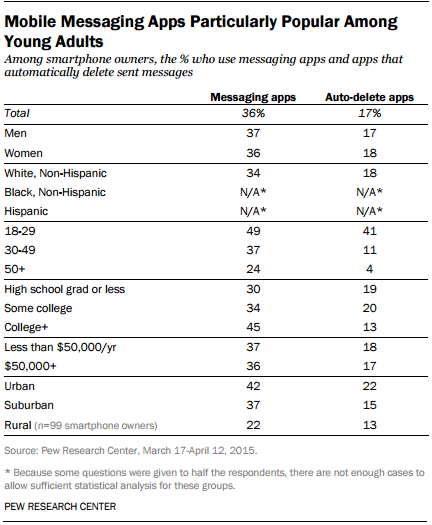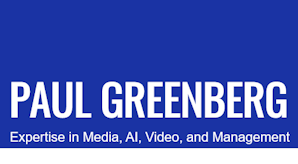
How Media Companies Can Win At Dark Social
How does content spread from user to user? Understanding how audiences find articles, videos, GIFs, etc. is a critical mission for publishers who live and die by the virality of their content. Solving that mystery has gotten even harder over the past few years. The latest — and most prolific — method that audiences are using to spread content around is through dark social: the sharing of content by means other than public social networks, which now accounts by some estimates for 70% of all content shared. As people grow more sophisticated in their use of social networks — and potentially more concerned about the nature of what they make public — sharing content over email, text and messaging apps like WhatsApp, Line and Snapchat (instead of Facebook, Twitter, Instagram, etc.) continues to grow.
Younger people are becoming more and more prevalent users of dark social. In fact according to a Pew study, among smartphone owners ages 18-to-29, 49% use messaging apps, and 41% use apps that automatically delete content, like Snapchat:

Given this, smart marketers have pushed ahead quickly. In fact:
- The messaging app Line is the Wall Street Journal’s fastest-growing platform.
- The BBC has added YikYak to the arsenal of chat apps it uses to communicate with users.
- Usership of the new messaging app Tribe is growing at 80% per week.
Platforms and marketers have also taken notice. Facebook is going to start putting ads in Messenger. Snapchat has been offering advertising opportunities for over a year. Outbrain has just released “Outbrain for Chat.” Many more are following suit quickly.
However, because these actions take place privately, it is very difficult to track this dark traffic. Buzzfeed claims that their comScore traffic of 80 million reported monthly unique visitors is less than one-fifth of their actual total global reach. They have implemented some clever solutions, like a unique ID (or hash) at the end of every URL so that they can track users and their sharing across platforms. Similarly, the Guardian uses a proprietary system that looks at the referral pattern of its articles. However, these are only partial solutions; more sophisticated mechanisms are necessary.
Therefore, in a world of sharing dominated by dark social, publishers must:
- Maintain a strong brand. While some content companies are giving over more and more control of their audience to social networks (think Facebook Instant Articles), brand is more critical than ever. Publishers must first understand what they want their brand to mean, and then make sure its connotation is crystal clear to its audience on every platform.
- Know the audience they are trying to reach. Saying, for example, “we want to reach millennials” is aiming at much too broad a target. Publishers must segment the people they are going after and understand not only who they are trying to reach but — most critically — what those people are doing when they are elsewhere. Creating a detailed profile of the desired users and how they spend their time will allow publishers to tailor an audience development strategy by reaching users wherever they are, not just where publishers want them to be.
- Recognize the difference among platforms. People use Facebook Messenger very differently from the way they use Snapchat. Employ specific tactics for each platform in order to reach the targeted audience as accurately and authentically as possible.
- Stay vigilant as new platforms emerge. Dominant technologies come and go, and user attention fragments and shifts quickly. Make sure to test and examine new ways the audience is communicating with the brand and each other.
- Remain data-driven and aggressively test. Work hard to develop a test-and-repeat discipline. As noted above, dark social does not lend itself naturally to tracking users, so publishers must constantly try new types of posts and different syntax, photos and videos to ensure they are speaking to the right audience in the appropriate way.
- Be prepared to forgo revenue at first. While some platforms are offering monetization options, most are still quite nascent. As with any relatively new method of communicating with users, content companies must present themselves and their brands as authentic, not simply as a way of shilling to drive instantaneous incremental revenue. Brands must first build trust and demonstrate the value they can provide, and once this value exchange has been solidified, users will be more likely to accept appropriate techniques of monetizing.
As media companies continue to use (and in fact need) third-party platforms to amplify their content, they must therefore must keep in close contact with their desired audiences as they rapidly change ecosystems. Of course, publishers cannot sacrifice complete control of their own audience channels (like their own websites). However, if they can ride above the platforms, as ever-changing as they are, content producers can maintain close relationships with their fans and ensure that their total audiences continue to grow. Without constant, aggressive vigilance around where their fans are coalescing, media companies will sacrifice both attention and revenue.

